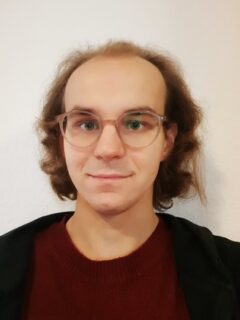Laura Holstein
Laura Holstein
Master student
Generation of gelatin-based hydrogels for biofabrication with tailorable microporosity by using porogens
Supervisors: Jonas Roeder, Prof. Aldo R. Boccaccini
Gelatin-containing hydrogels like ADA-Gel are widely used inks for biofabrication. The printed scaffolds must have a specific microporosity to provide space and enable the diffusion of nutrients to the cells [1,2]. A way to control this property is to incorporate materials which will degrade fast enough. As gelatin denatures via heat treatment and therefore degrades faster [3], its use represents a promising approach. The goal of the Master thesis is to explore the potential of gelatin as a porogen to control the microporosity of gelatin-based hydrogels for biofabrication.
[1] Heid, S. & Boccaccini, A. R. Advancing bioinks for 3D bioprinting using reactive fillers: A review. Acta Biomater. 113, 1–22 (2020).
[2] Nguyen, T. P. & Lee, B. T. Fabrication of oxidized alginate-gelatin-BCP hydrogels and evaluation of the microstructure, material properties and biocompatibility for bone tissue regeneration. J. Biomater. Appl. 27, 311–321 (2012).
[3] Kreller, T. et al. Physico-chemical modification of gelatine for the improvement of 3D printability of oxidized alginate-gelatine hydrogels towards cartilage tissue engineering. Mater. Des. 208, 109877 (2021).

